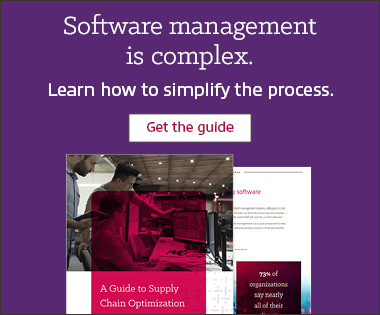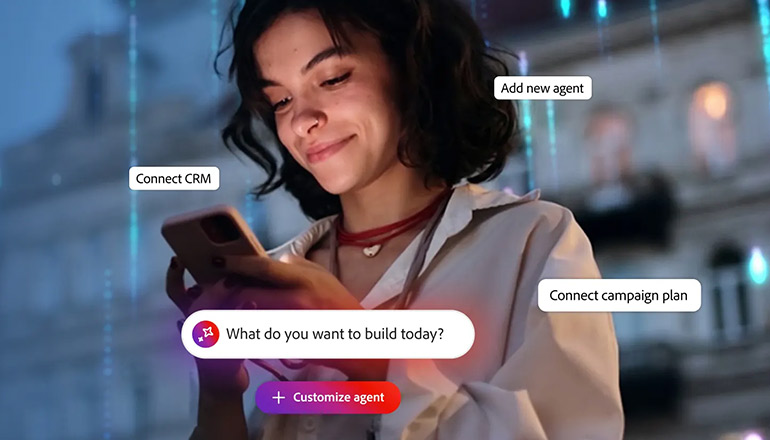Article Building the Software Asset Management Business Case
Executives aren’t convinced that a solid software asset management plan is a critical endeavor. But in today’s business world, it is. So how do you convince the C-suite to invest in a more robust program?
By Emily Allender / 1 May 2020 / Topics: Software

Having a hard time convincing your C-suite to invest in your company’s Software Asset Management (SAM) practice? We hear that a lot. Here's how to build a software asset management business case.
It makes sense. Before maybe 10 years ago, SAM was unnecessary. The proliferation of Software as a Service (SaaS) introduced the threat of audits and the need to focus on compliance. But true software asset management, where companies actively track their license entitlements and usage, has been slow to catch on.
In fact, it’s estimated that 45% of companies are in a reactive state when it comes to SAM, merely responding to vendor audits as they happen or focusing on major contract renewals.
But with increasingly complex software licensing environments, including widespread adoption of cloud platforms, comprehensive SAM could help these companies to re-harvest unused licenses and avoid over purchasing while avoiding audits.
And since software is so engrained in modern business, SAM has evolved into a practice that has wide-reaching influence within the business. It now supports strategic business development across multiple departments and IT leaders will have to engage their executives to secure company-wide support for SAM initiatives.
But how do you convince the C-suite of that?
Approaching your stakeholders
Compliance is almost a by-product of effective SAM implementation. It helps cut costs, free up employee time and make everyone’s software/tools work better. But like we said, many executives still think of SAM as simply a path to compliance (if they think about it at all). You’ll need to shift their way of thinking.
If you need help compiling all the reasons software asset management is a business imperative, we recommend reading this article and watching this webinar series.
But first, you’ll need to figure out who to include in a SAM investment discussion and it’s important to extend beyond just the C-suite and IT leaders. SAM initiatives have wide-reaching consequences for many departments, including HR, finance and legal. While you don’t want too many cooks in the kitchen, you also want to understand these leaders’ challenges with software in order to create a strategy that helps everyone.
Give them options.
Once you identify all relevant stakeholders, it’s important to outline not just the current challenges and benefits of comprehensive software asset management, but also the potential risks and multiple options for a solution. In a broad sense, lay out what will happen if they:
- Carry on with the current “strategy” and accept the associated risks.
- Wait until a major audit happens and the team has to rush to react.
- Go overboard and implement all the “nice-to-haves” that aren’t really necessary.
- Follow your proposed plan (a realistic solution to solve today’s problems).
Hopefully they’ll go for the last one, but if not, at least you know what they have signed off on.
Clearly define your software licensing goal.
There’s no one-size-fits all SAM strategy because every company has its own set of challenges. Yours could be struggling with getting the best price for contracts, overpurchasing in order to defend against audits — or simply trying to understand its existing software environment.
When you go after C-level support for your new program, clearly define the goal you’re trying to achieve, such as:
- Strengthening your negotiating position with publishers
- Finding and re-deploying unused licenses
- Cutting costs by purchasing the right amount of licenses the first time
- Eliminating shadow IT by investing in software your employees actually use
- Streamlining procurement processes
This helps give your department more defined goals to hit and metrics that are easier to measure.
Get to work.
Hopefully, all your persuasive arguments, statistics and cost analyses pay off, and you get the go ahead from your executive stakeholders. Now it’s time to put your money where your mouth is.
One crucial detail you must consider is whether you’ll implement this new plan with only in-house resources or reach out to third parties. If you’re new to SAM, you’ll soon find that expertise is difficult to come by and even more difficult to keep on staff.
If you do plan to outsource any part of your SAM, be sure to research potential service companies or consultants and include their expected contributions (and fees) in your initial presentation.
There are different kinds of IT partners out there, with varying levels of SAM expertise and capabilities. Choose one that can not only help with your plans for today’s challenges, but scale with you and solve tomorrow’s as well.








